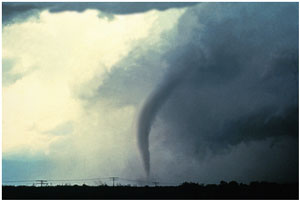It’s been raining all day, for three days and you co me home to find water has made its way into your basement. Typically, you’d start to move everything off the floor that could be damaged and anything that could possibly be salvaged, start baling water and call your insurance agent. Your agent, who you’ve been with since you bought your house 15 years ago, tells you your homeowners policy doesn’t have flood coverage. But you have homeowners insurance; isn’t that what it’s for?
me home to find water has made its way into your basement. Typically, you’d start to move everything off the floor that could be damaged and anything that could possibly be salvaged, start baling water and call your insurance agent. Your agent, who you’ve been with since you bought your house 15 years ago, tells you your homeowners policy doesn’t have flood coverage. But you have homeowners insurance; isn’t that what it’s for?
You’re paying for insurance to cover your home, so why wouldn’t you assume if your home floods, it’s covered? This situation happens much more often than we’d like to think. Just ask your local insurance agent. All too often when new homeowners insurance policies are being written, homeowners aren’t thinking about disasters actually happening. Some say, “When I purchased my house, the previous owners said they never had water in the basement,” or maybe you were a bit more proactive and double-checked your address wasn’t in a high-risk flood zone. So skipping on flood coverage doesn’t seem like a big deal on the bright and sunny day you’re getting this new policy. Now, your insurance agent more than likely told you what your policy covers and doesn’t cover when writing it, but, with this economy today, people are seeking insurance policies with the cheapest option in mind. And the inexpensive ones don’t include a separate flood policy in addition to your homeowners insurance. You always have to ask for an additional policy to cover flood damage.
It’s awful to hear about a flood in someone’s home, and worse yet to find out they don’t have flood coverage in their insurance policy. I’m sure anyone who learned this lesson the hard way, will tell you to reconsider paying extra for the coverage. Since I own a home in a high risk flood zone, I have to carry flood insurance, but for those whose mortgage company doesn’t require it, here are some facts that might make you think twice:
-
Everyone theoretically lives in a flood zone
-
Most homeowners insurance does not cover flood damage
-
Just an inch of water can cause costly damage to your property
-
If you live in a moderate-to-low risk area and are eligible for the Preferred Risk Policy, your flood insurance premium may be as low as $129 a year, including coverage for your property's contents
Those stats, and more, can be found at www.floodsmart.gov, the official website for the National Flood Insurance Program (NFIP), specifically designated for flood information by the Federal Emergency Management Agency (FEMA). Check out that website to learn more about flooding & flood risks, you can even look up your address and what flood zone you’re in and tips for preparation & recovery.
Beware that flood insurance can be a little tricky too, so make sure you know what you’re paying for. Some only cover the building, only the contents OR the policy can cover both. Flood Insurance deductibles can be much higher also. When looking into any policy, always make sure you know what is and is NOT covered. Leaving what is covered to assumption can lead to a disaster in itself! So stop reading this blog and find your policy to see if you’re covered before it starts raining again.

 The storm has passed. No one was hurt. However, the house wasn’t so lucky. “Now what do we do?”
The storm has passed. No one was hurt. However, the house wasn’t so lucky. “Now what do we do?” 
 HOW SERIOUS IS BASEMENT FLOODING:
HOW SERIOUS IS BASEMENT FLOODING: Just because the snow is gone doesn’t mean you’re past the danger of a flooded basement. The ground is still frozen and in the process of thawing when the spring rains come, therefore, the ground is too saturated and/or frozen to absorb the water. The water then flows down the easiest path which is usually to your foundation wall and into your basement.
Just because the snow is gone doesn’t mean you’re past the danger of a flooded basement. The ground is still frozen and in the process of thawing when the spring rains come, therefore, the ground is too saturated and/or frozen to absorb the water. The water then flows down the easiest path which is usually to your foundation wall and into your basement.